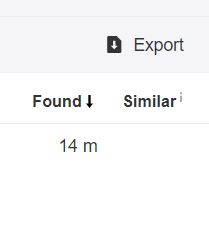How to Prevent Your Website From Getting Attacked by Spammy and Malicious Links and Recover
One of the worst things that could happen to any website that you have given a lot of time and effort to optimize is seeing it get attacked by any form of negative SEO. Despite the many advancements in SEO and cybersecurity over the past few years, attacks can still happen in a frequent basis, which leads to numerous issues such as traffic loss, penalties from search engines, and even parts of your website no longer functioning.
As an SEO company, it is a crucial task to make sure this doesn’t happen to our websites or be able to solve the issue immediately. Negative SEO comes in many forms, and all of it can inflict all kinds of problems you wouldn’t want for any of your websites. One of the most notable examples of negative SEO is spammy and malicious links, which can appear seemingly out of nowhere to ruin your traffic and content quickly if not acted upon. With that in mind, it is best to find the best strategies that would help you remove these links and recover your traffic before more damage is done.
Start by conducting a link audit
In our previous article, we have discussed disavowing links, which is an action that must be taken with serious caution, as it can greatly affect your website’s traffic and content. For this case, disavowing links is one of the most effective actions to take when it comes to spammy and malicious links. Before going to Google’s Disavow Links tool, the first step is to conduct a link audit and track all of the links that are present during a certain time period.
Ahrefs allows you to track and export your links into a file, which makes it easier to evaluate and mark each link, especially when the number of links reaches the hundreds or thousands, which is a scenario that can happen.
CAUTION
This process can take a lot of time depending on the number of links. However, it is best to conduct this process with enough time, as disavowing links is an action that would be very difficult to undo, which means accidentally disavowing a good link is a recipe for disaster. It is best to take this step by step and have your team double check before applying the action.
It is also worth noting that disavowing links must only be done in the following conditions:
You were attacked by negative SEO – The case for this article, this can mean harmful links and other black hat techniques that involve links.
Manual Link Penalty from Google Search Console – Receiving this means that Google has found some links that might need another look to see if it is something that needs to be disavowed.
Apply
The next step is to apply the action by disavowing all of the harmful links. This will signal Google to block those links in your website, protecting your website from being harmed further. The process can take a few weeks, which makes it a lengthy process that must be monitored constantly.
You need to create a .txt file that contains the links that need to be disavowed and sign in to your Google Search Console account. The next step is to upload the file and select Disavow Links.
From then on, Google will be conducting a lengthy process gradually. It is worth noting that if you have any additional links to disavow, all you need to do is to reupload an updated file with the additional links.
Recovery
The next step is to conduct fixes to your website and recover any lost links, content, and traffic. Like disavowing links, this can take time and is dependent on the damage that has been caused by these malicious attacks. With this, it is best to stick with your proven SEO strategies to allow you to be able to recover your traffic.
It is best to start through content optimization to allow you to recover your search rankings. Stick to creating trustworthy and authoritative content as that would help re-establish your presence in Google SERPs, and also become places that contain good links that would also help you gain more link juice.
Since you have lost links and disavowed unwanted ones, a solid link building strategy is also a must. Linking to authoritative sites, along with guest content from reputable sources would surely help give you link juice and more organic traffic gradually.
While this may be standard optimization processes, going back to basics is the best step to take, as attacks can be so severe, that you may have to almost go back to your starting point. Damage done can vary from site to site, but the standard procedure of regaining your traffic should be similar, and you will be able to regain lost traffic.
Prevention
Preventive measures must be taken once you have re-established your website, as you are still at risk of being attacked again. One of the first things you can do is to monitor website comments, as some of the most common places where bad links can appear. Suspicious reviews from Google My Business can also be areas of concern and flagging them ASAP would be the best step to take.
Regular site crawling also makes sure that you would be able to monitor issues within your website as well, which is why tools like Screaming Frog is a must in your arsenal. Google Search Console manual actions must also be acted upon immediately, as this can be another starting point for attacks. The best remedy for any issue is immediate action, and regular monitoring and checks would allow you to be able to sniff out anything that would harm your website.
Key Takeaway
Being attacked by spammy or malicious links is one of the worst things that could happen to your website. With the right strategy, along with conducting careful and calculated processes, you would be able to remedy your website from malicious and spammy links.
If you have questions and inquiries about negative SEO and SEO in general, leave a comment below and let’s talk.


